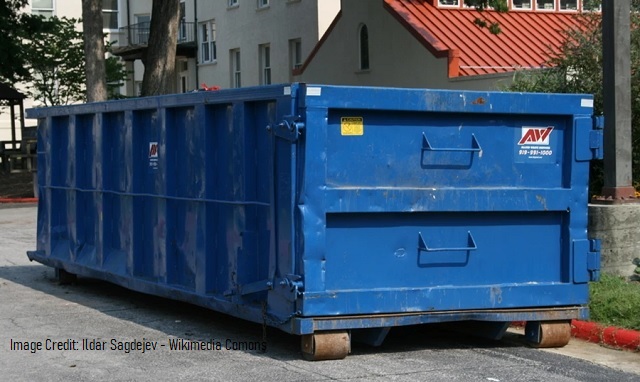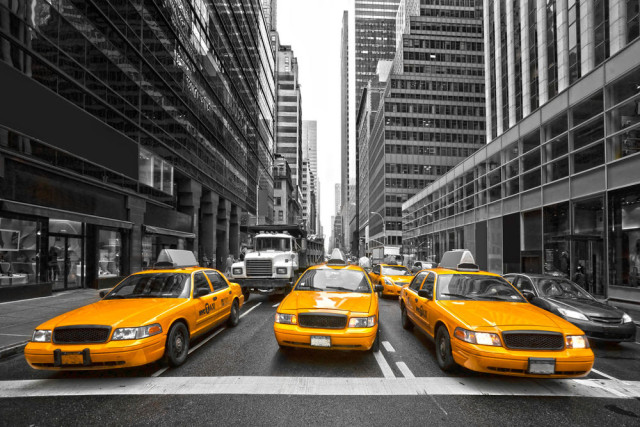Young Montana Entrepreneur Is Being Legally Barred from Hauling Trash Because Established Players Don’t Want the Competition

If it sounds crazy that established players get a say on who is allowed to compete with them, well, it should.
When Parker Noland launched his trash-hauling business at age 20 in the summer of 2021, he was excited about the opportunities that lay before him. After taking out a loan from a local bank, the Montana native bought a truck and some dumpsters and got to work promoting his services. The business plan was simple: he would deliver dumpsters to construction sites looking to get rid of debris and then transport the dumpsters to the county dump once they were full.
Things quickly got complicated for Noland, however. Though he had registered his business, gotten the proper insurance, and complied with all public health and safety standards, he was still missing one thing, a Certificate of Public Convenience and Necessity. As a result, right when he was about to get his business off the ground he was given a cease and desist order by the Montana Public Service Commission, the agency responsible for administering the Certificate law.
Noland applied for the Certificate shortly thereafter on September 8, 2021, but his troubles were just getting started. Two national garbage companies—his would-be competitors—protested his application, which they are allowed to do under the law. The companies issued various demands, such as data requests, and Noland’s legal expenses to fight the protests were soon thousands of dollars and counting.
On November 9, 2021, Noland made the difficult decision to withdraw his Certificate application, seeing as he could not afford the mounting legal expenses involved with fighting the protests. To this day, Noland remains ready and willing to run his trash-hauling business, but he is legally barred from doing so until he gets the Certificate.
On November 15, 2022, Noland teamed up with the Pacific Legal Foundation (PLF) to file an official complaint with Montana’s eleventh judicial district court, seeking a permanent injunction against further enforcement of the law on the ground that it violates his Constitutional rights.
A Competitor’s Veto
If it sounds crazy that established players in an industry are empowered by the government to bury would-be competitors in unnecessary legal fees, well, it should. As PLF argues, these laws practically amount to a “competitor’s veto.”
“Montana’s Certificate of Public Convenience and Necessity law allows established garbage companies to keep potential competitors like Noland out of the market,” PLF writes in their complaint. “Noland applied for a Certificate, but was forced to withdraw his application after some of the largest garbage companies in the nation protested his application, which imposed massive delays and created enormous financial costs. The Certificate provisions challenged in this case prevent Noland and other would-be entrepreneurs from working—not because they are unfit to operate—but to protect incumbent garbage companies from having to compete fairly.”
“Incumbents can protest for the bare reason that they do not want to face new competition,” PLF continues. “The Montana Public Service Commission is further empowered to reject an applicant because it believes there is no ‘need’ for a new company, and therefore that a new business would take away from the incumbent’s profits. Together these provisions create a Competitor’s Veto over those who wish to exercise their right to earn a living as a Class D hauler. This blatant economic protectionism is prohibited by the Montana and U.S. Constitutions.”
In sum, “the Competitor’s Veto allows existing garbage companies to force an applicant to undergo the time and expense of an administrative hearing that has nothing to do with the applicant’s public safety record, or any other matter related to public health or safety, but instead simply because existing garbage companies seek to restrict market competition.”
Noland is hardly the only entrepreneur running into this problem. As PLF notes, there were eight applications for a Class D (trash hauling) Certificate in Montana between January 1, 2018 and September 8, 2021. All eight faced protests. As a result of the protests, four of the applications were withdrawn, one was denied, and two were granted the Certificate only after agreeing to reduce the scope of their business.
The story of the one successful applicant who didn’t have to reduce their scope is revealing.
“The only applicant who succeeded in securing a Certificate over a protest, and without reducing the scope of its business, was L&L Site Services, Inc., on December 15, 2020,” PLF notes. “After a lengthy legal fight before the Commission, which involved extensive discovery, including 13 supplemental responses to Allied Waste Services’ data requests, a 5-day evidentiary hearing requiring legal representation, and contentious oral argument, L&L’s application was granted on April 29, 2022, over two dissenting votes from Defendants Brad Johnson and Randy Pinocci.”
The garbage company which protested their application has since filed a Motion for Reconsideration, which remains pending.
“Over the past 3 years,” PLF concludes, “the strongest predictor for getting permission to enter the trade of dumpster servicing was agreeing to reduce one’s operating authority to not compete with incumbents. And even though one applicant was able to afford the time and expense of the legal battle required by an incumbent’s protest, the challenged provisions still allowed the incumbent to inflict significant costs and delay on its potential competitor for purely anti-competitive reasons.”
The Case against Certificate Laws
Laws requiring a Certificate of Public Convenience and Necessity (CPCN) cover a variety of industries in different states—from trash collection to telecommunications to natural gas—but they all have similar impacts. They are closely related to Certificate of Need laws (CON laws) which create similar barriers in the healthcare industry (hospitals, nursing homes, ambulances, etc.) and in other industries such as transportation (specifically moving companies).
The justification for these kinds of laws is twofold. For one, proponents argue that allowing businesses to compete without demonstrating a “need” will lead to duplicative services, that is, an overabundance of supply in a given area. The problem, they contend, is that this will lead to higher prices because companies will charge more for the capacity they do use to compensate for the unused capacity. If a company builds a hospital, for example, but realizes it can’t fill half its beds because the market is already saturated with hospitals, it will ostensibly hike prices for the beds it does fill to compensate for its loss.
The other argument is that by restricting entry into “saturated” markets, politicians can use CPCN and CON laws to encourage entrepreneurs to set up shop in areas that tend to have less access to these services, such as rural areas.
These arguments may sound plausible at first glance, but upon closer inspection they are rather spurious. For one, how does a bureaucrat determine when a market is too saturated? There are no objective criteria here. What’s more, the very fact that an entrepreneur is planning to enter a market is evidence that, at least from their perspective, there are needs that are currently not being met by established players.
Another major problem with this analysis is the assumption that businesses can unilaterally raise prices in order to cover their costs. This is not how prices work. Prices are set by supply and demand. If anything, a greater supply in a region will lead to lower prices.
The idea that these laws are needed to push entrepreneurs to “lower access” regions is also dubious. An entrepreneur, almost by definition, is seeking to meet needs that haven’t already been satisfied. Thus, they naturally gravitate to precisely these “low access” regions. If they successfully set up shop in a supposedly “saturated” market, it is evidence that the market wasn’t, in fact, saturated. If their business in that region fails, on the other hand, the market will quickly usher them elsewhere all on its own.
Noland’s story is a case in point on this. As PLF notes, construction companies specifically sought out Noland because the large incumbent companies weren’t picking up bins in a timely manner. In other words, there was a market need that was clearly going unfulfilled. The market was not saturated, and that’s precisely why Noland was setting up shop in the first place. Further, Noland’s more compact truck “allowed him to offer services to areas where the incumbent companies did not,” something he was no doubt planning to take advantage of.
There’s a curious irony here. Though the Certificate law was intended to increase services in underserved areas, its practical impact is to restrict services in evidently underserved areas.
There’s an irony on the price front too. Though the law was intended to keep prices down, by restricting entry it is actually creating opportunities for incumbents to keep prices up!
Thus, on both issues, these laws are not only unnecessary, but counterproductive. They are hurting the very consumers they were supposed to protect, not to mention the would-be competitors like Noland who are effectively prohibited from entering the market.
The economist Murray Rothbard summarizes the effect of these policies well in his book Power & Market.
“Certificates of convenience and necessity are required of firms in industries—such as railroads, airlines, etc.—regulated by governmental commissions. These act as licenses but are generally far more difficult to obtain. This system excludes would-be entrants from a field, granting a monopolistic privilege to the firms remaining; furthermore, it subjects them to the detailed orders of the commission. Since these orders countermand those of the free market, they invariably result in imposed inefficiency and injury to the consumers.”
While the Certificate law in Noland’s story is certainly troubling, the deeper problem this story highlights is the belief that government restrictions of the market can help consumers. The reality is exactly the opposite. The best way for the government to help consumers is to get out of the way, and in particular, to stop enforcing regulations that protect established players from new entrants. Let entrepreneurs compete. Let consumers have choices.
America was built by the Parker Nolands of the world, young entrepreneurs full of dreams and ambitions.
It would be a shame if we strangled that spirit with red tape.
This article was adapted from an issue of the FEE Daily email newsletter. Click here to sign up and get free-market news and analysis like this in your inbox every weekday.
AUTHOR
Patrick Carroll
Patrick Carroll has a degree in Chemical Engineering from the University of Waterloo and is an Editorial Fellow at the Foundation for Economic Education.
RELATED ARTICLE: Cuba’s Bustling Black Markets Hold an Important Economic Lesson
EDITORS NOTE: This FEE column is republished with permission. ©All rights reserved.























